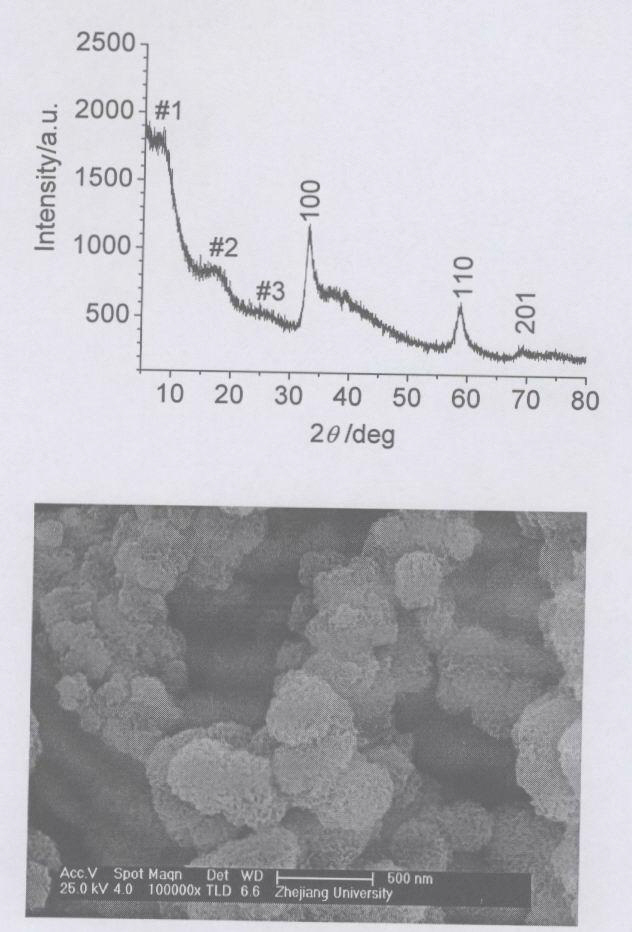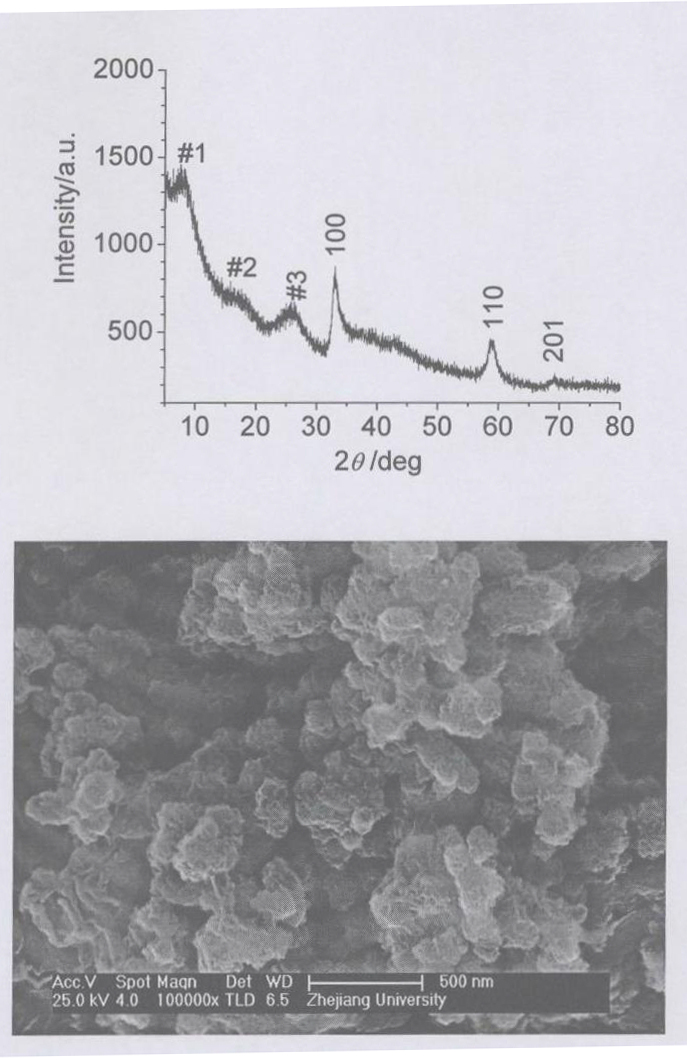Lithium ion battery electrode made of graphene/ MoS2 and amorphous carbon and preparation method
A lithium-ion battery, amorphous carbon technology, applied in battery electrodes, non-aqueous electrolyte battery electrodes, circuits, etc., to achieve the effects of enhancing stability, inhibiting agglomeration and pulverization, and improving cycle performance
- Summary
- Abstract
- Description
- Claims
- Application Information
AI Technical Summary
Problems solved by technology
Method used
Image
Examples
Embodiment 1
[0029] Graphene / MoS 2 Preparation method of lithium-ion battery electrode with amorphous carbon
[0030] 1) Preparation of graphite oxide nanosheets: Disperse 1.25mmol (0.015g) of graphite powder into 20mL of concentrated sulfuric acid in an ice bath at 0°C, and add KMnO 4 , the added KMnO 4 The mass of graphite is 3 times that of graphite, stir for 30 minutes, the temperature rises to about 30°C, add 45ml of deionized water, stir for 20 minutes, add 10ml of 30% H 2 o 2 , stirred for 5 minutes, centrifuged, and repeatedly washed with a mass concentration of 5% HCl solution, deionized water and acetone to obtain graphite oxide nanosheets;
[0031] 2) Dissolve 1.25mmol (0.303g) of sodium molybdate in 63ml of deionized water to form a 0.02M solution, add 6.25mmol of thiourea and 1g (5.56mmol) of glucose, stir evenly, and the mixture of thiourea and sodium molybdate The ratio of mass is 5.0: 1, and the ratio of the mass of glucose to sodium molybdate is 4.45: 1, then the graph...
Embodiment 2
[0037] Graphene / MoS 2 Preparation method of lithium-ion battery electrode with amorphous carbon
[0038] 1) Preparation of graphite oxide nanosheets: Disperse 2.5mmol (0.03g) of graphite powder into 24mL of concentrated sulfuric acid in an ice bath at 0°C, and add KMnO 4 , the added KMnO 4 The mass of graphite is 3.5 times that of graphite, stir for 40 minutes, the temperature rises to about 34 ° C, add 45ml of deionized water, stir for 25 minutes, add 12ml of H2O with a mass concentration of 30% 2 o 2 , stirred for 7 minutes, centrifuged, and repeatedly washed with a mass concentration of 5% HCl solution, deionized water and acetone to obtain graphite oxide nanosheets;
[0039] 2) Dissolve 1.25mmol (0.303g) of sodium molybdate in 63ml of deionized water to form a 0.02M solution, add 7.5mmol of thioacetamide and 1g (5.56mmol) of glucose and stir well, in which thioacetamide and molybdenum The ratio of the amount of substance of sodium molybdate is 6: 1, and the ratio of th...
Embodiment 3
[0044] Graphene / MoS 2 Preparation method of lithium-ion battery electrode with amorphous carbon
[0045] 1) Preparation of graphite oxide nanosheets: Disperse 5.0 mmol (0.06 g) of graphite powder into 25 mL of concentrated sulfuric acid in an ice bath at 0 °C, and add KMnO 4 , the added KMnO 4 The mass of graphite is 4 times that of graphite, stir for 50 minutes, the temperature rises to about 35°C, add 50ml of deionized water, stir for 30 minutes, add 15ml of H2O with a mass concentration of 30% 2 o 2 , stirred for 10 minutes, centrifuged, and repeatedly washed with a mass concentration of 5% HCl solution, deionized water and acetone to obtain graphite oxide nanosheets;
[0046] 2) Dissolve 1.25mmol (0.303g) sodium molybdate in 63ml of deionized water to form a 0.02M solution, add 10mmol of thioacetamide and 1g (5.56mmol) of glucose and stir well, thioacetamide and molybdenum The ratio of the mass of sodium molybdate is 8: 1, the ratio of the mass of glucose to sodium mol...
PUM
 Login to View More
Login to View More Abstract
Description
Claims
Application Information
 Login to View More
Login to View More - R&D
- Intellectual Property
- Life Sciences
- Materials
- Tech Scout
- Unparalleled Data Quality
- Higher Quality Content
- 60% Fewer Hallucinations
Browse by: Latest US Patents, China's latest patents, Technical Efficacy Thesaurus, Application Domain, Technology Topic, Popular Technical Reports.
© 2025 PatSnap. All rights reserved.Legal|Privacy policy|Modern Slavery Act Transparency Statement|Sitemap|About US| Contact US: help@patsnap.com



